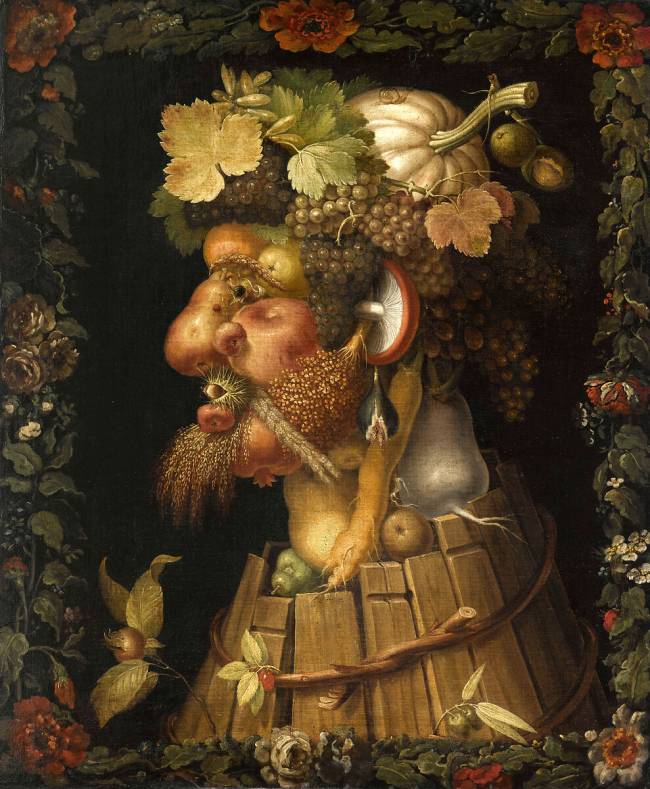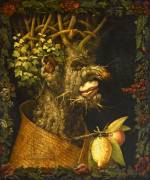Shop art print and framed art L'Automne by Giuseppe Arcimboldo
Customise
Your art print
L'Automne OF Giuseppe Arcimboldo
L'Automne
Giuseppe Arcimboldo's Autumn: an emblematic work by the artist
Giuseppe Arcimboldo was an Italian painter but also a sculptor, architect and engineer, born in Milan in 1527 and died in 1593. He is particularly famous for his "composed heads" made with objects or natural elements such as fruit, vegetables or flowers. One of his most famous masterpieces is undoubtedly Autumn, part of the Four Seasons series, produced between 1572 and 1573.
History of Giuseppe Arcimboldo's L'Automne
Arcimboldo created this work while working in the service of Emperor Rudolf II in Vienna. It was one of the most prestigious commissions he received during his career. The four paintings of the seasons were clearly much appreciated by their commissioner, since they would serve as inspiration for other representations of the seasons.
A tribute to nature
In L'Automne, Arcimboldo highlights the richness and variety of nature during this season. The elements that make up this painting recall the passage of time as well as the cycle of life. Of particular note is the presence of grapes, a symbol of bliss and abundance, representing the end of summer and the beginning of the grape harvest.
.The theme of the seasons is also a subject frequently addressed in Renaissance art. This period is characterized by great inspiration drawn from nature, as well as by a constant search for realism in the depiction of flowers and fruit, appreciated as ornamental motifs.
The seasons are also a frequent theme in Renaissance art.
Description of L'Automne
Giuseppe Arcimboldo's Autumn is characterized by its rich, harmonious shapes and colors. It is composed of a multitude of natural elements that make up the facial features of the central figure, declined in a varied and contrasting color palette.
An enigmatic portrait
In the center of the painting, we discover a face with features composed essentially of seasonal fruits and vegetables. This "composed head" is a recurring device in Arcimboldo's work, creating an effect of surprise and astonishment in the viewer.
The face of a man in profile is revealed through a complex, humorous composition: a blackberry for the eye, a chestnut bogue for a smile, an apple for the nose, a beard of wheat ears, a mushroom for the ear, hair of bunches of grapes... To spin the metaphor of the grape harvest, the courtier's body is also figured using planks from barrels dedicated to preserving wine. The generosity of the composition is reminiscent of Bacchus, the Roman divinity of nature, wine and overflow.
An innovative style
Arcimboldo succeeds, in L'Automne, in creating a work that is both realistic and surreal, thanks to his skilful layering of the various natural elements that make up the portrait. The contrast between the various very real elements and the anthropomorphic form they form gives this painting a dimension emblematic of the Mannerist art of this period.
A special place in Arcimboldo's work
A true allegory of the autumn season, this work also marked a turning point in the artist's career. Indeed, Arcimboldo models the compositions in this series of seasons on himself. He is thus both painter and character, creator and creature.
.Furthermore, the fact that L'Automne is part of a series of paintings testifies to a desire to create a coherent whole according to a thematic logic, appealing to different levels of reading and interpretation.
This artwork is a painting from the renaissance period. It belongs to the italian renaissance style.
« L'Automne » is kept at Louvre, Paris, France.



































